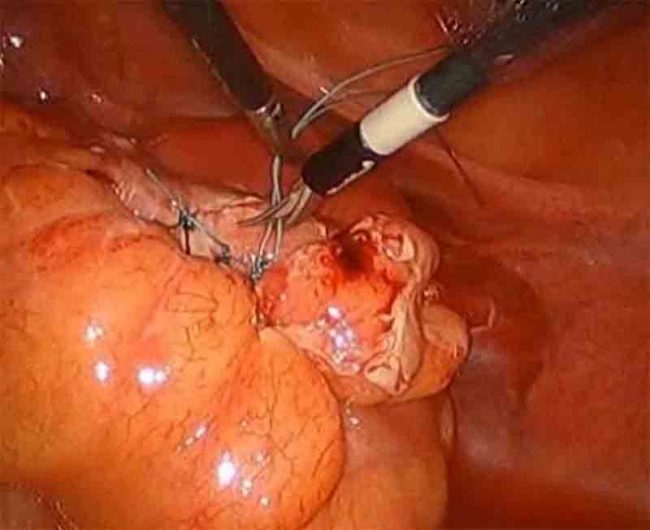Laparoscopic & Robotic news
This is a 91 year old female with history of a bulge in the right groin with on and off pain and discomfort and episodic abdominal pain. She underwent a diagnostic laparoscopy which showed bilateral obturator, right femoral and inguinal hernias. Therefore, a robotic surgery assisted of her hernia repair with placement of 3 D mesh was carried out.
This is a 67 years old male who found to have adenocarcinoma of the appendix after an appendectomy for acute appendicitis. Therefore, he required right hemi-colectomy for completion of oncological resection and staging.
This is a 73 years old female who presented with one month history of intermittent abdominal pain and changes in her bowel habit. As part of her work-up, she underwent a colonoscopy which showed near obstructing right colon mass. The biopsy of the mass confirmed the presence of adenocarcinoma of the right colon.
The application of Robotic assisted Trans Abdominal Pre-peritoneal “TAPP” ventral hernia repair in the obese patient population:
Conventional open hernia repair of a large incarcerated supra-umbilical ventral hernia repair in an obese patient requires a mid-line abdominal incision and creation of skin flap to reduce the incarcerated intra-abdominal structure, close the ventral hernia defect and reinforce the closure with placement of a mesh.
This is a 65 years old male with two months history of right lower quadrant abdominal pain whose initial CT scan showed mild enlargement of appendix suspicious for acute appendicitis. Patient was treated with conservative therapy with antibiotics and sent home.
This is a 45 years old female with history of hysterectomy in the past who presented with lower abdominal pain, abdominal distension and obstipation and found to have complete small bowel obstruction on her CT scan. She underwent a diagnostic laparoscopy which showed strangulated loop of ileum in an internal hernia created by a very tight adhesion between right side of pelvic wall and sigmoid colon.
This is a 45 years old female with five years history of episodic upper abdominal pain whose ultrasound showed gallstones with thickened gallbladder wall , consistent with chronic cholecystitis. Initial inspection with laparoscopic technique showed chronic cholecystitis with significant thick, firm adhesion and scar tissue around the gallbladder
This is a 48 years old female with history of chronic back pain on multiple pain medications, including aspirin who came into the emergency room with sudden onset of severe upper abdominal pain and found to have significant tenderness on her physical examination. Her abdominal CT scan showed free intraabdominal air and fluid, consistent with perforated viscus.
This is a 52 years old female who presented to the emergency room with two days history of severe left lower quadrant abdominal pain, nausea, vomiting, and fever. She was found to have severe tenderness and guarding in the left lower quadrant and her abdominal CT scan showed severe sigmoid diverticulitis with micro-perforation and significant peri-colonic inflammatory changes.
This is a 61 years old male with history of multiple abdominal surgeries for placement of the gastrostomy and jejunostomy feeding tubes in the past. He recently required another feeding tube due to recurrent inability to tolerate the oral diet and significant malnutrition.
Abdominal wall hernia is a common surgical problem. Hernia is a defect in the abdominal wall. Therefore, the content of the abdominal cavity could potentially protrude through this defect causing an abdominal wall bulge with on and off pain and discomfort especially during activity and straining. The hernias could be congenital or acquired and could get larger and more symptomatic by time.
This question is a very controversial topic in general surgery and coming up with one right answer for all situations is impossible and incorrect. Therefore, let`s evaluate different scenarios and situations. One major rule is, that in the presence of infection whether in the area of the hernia or in the remote location, repairing of the hernia with permanent mesh is not advised.













